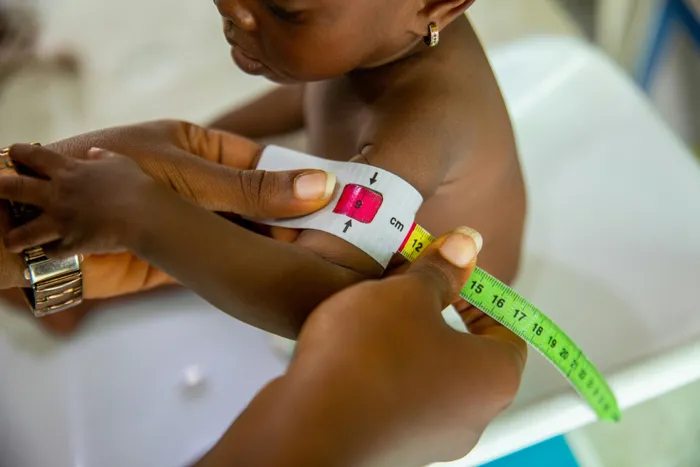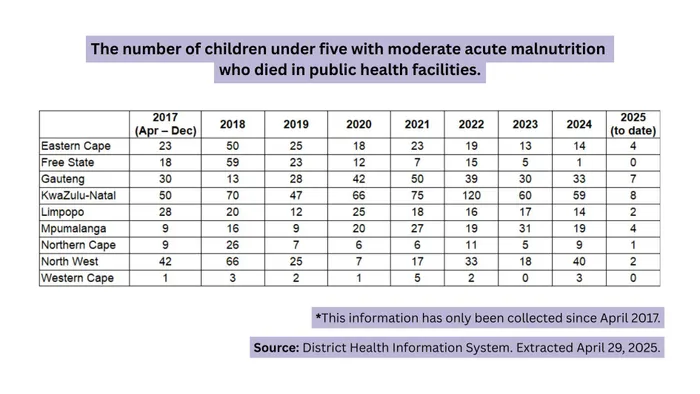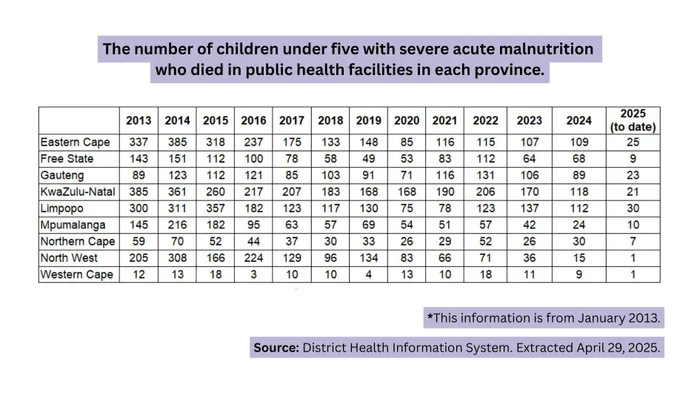Rise in childhood malnutrition deaths

South Africa faces a growing crisis as 155 children under five have died from malnutrition-related conditions this year.
Image: Lagos Food Bank Initiative/pexels
Four months into the year and 155 children under the age of five have already died from moderate or severe acute malnutrition as an underlying condition in South Africa.
This was revealed by Health Minister Dr Aaron Motsoaledi when responding to a written parliamentary question from the DA.
In a statement, DA spokesperson on health, Michele Clarke and DA spokesperson on social development, Bridget Masango, demanded action.
“The DA is devastated to learn that 155 children across our country under age five have died in public health facilities with moderate or severe acute malnutrition as an underlying condition since January 2025. The majority of children affected were in Limpopo (32), Gauteng (30), and KwaZulu-Natal (29),” the statement read.

The number of children under five with moderate acute malnutrition who died in public health facilities.
Image: Supplied
It said last year, a staggering rise in malnutrition cases was revealed: severe acute malnutrition in children younger than five has risen by 26% over the past five years.
“This is a serious and growing tragedy across South Africa, correlating with a legacy of increasing unemployment and increasing cost of living,” the statement read.
The party believes that a cross-cutting intervention is necessary.
“The Department of Social Development must ensure that mothers, fathers and carers receiving the child care grant are assisted and thoroughly informed on the best and most nutritious foodstuffs that the grant should buy every month. This is not a passive obligation, but one that the Social Development Department and SASSA must do actively for all mothers, fathers and carers who struggle to nourish their children in trying economic circumstances,” the statement read.
“The Department of Health must address childhood malnutrition deaths with vastly enhanced public information campaigns on the signs of malnutrition and clear direction on seeking treatment before it is too late. This must be stopped with greatly improved public information campaigns that reach millions of mothers and carers.”

The number of children under five with severe acute malnutrition who died in public health facilities in each province.
Image: Supplied
UNICEF South Africa nutrition manager Gilbert Tshitaudzi said the organisation noted the number of children who died from moderate or severe acute malnutrition from the District Health Information System (DHIS). However, the reported numbers seem to follow similar trends they observed in the previous year..
“Children with moderate acute malnutrition are likely to survive or not even progress to the severe form of malnutrition if they are identified and treated earlier. Active case finding and early identification of children at the community level are critical in preventing all forms of malnutrition,” Tshitaudzi said.
He said UNICEF believes the most effective and ethical way to address acute malnutrition in children is to prevent it from occurring in the first place through action across health, social protection, WASH (water, sanitation and hygiene) and food systems.
Tshitaudzi explained that prevention efforts start with good maternal nutrition, ensuring children are born at a healthy weight and benefit from breastfeeding, consume safe and affordable nutritious foods, have access to clean water and sanitation, and receive appropriate healthcare.
“Comprehensive multi-sectoral actions that build the resilience of affected communities where these children live are essential to achieve sustainable progress in preventing acute malnutrition,” Tshitaudzi said.
He said UNICEF advocates for early detection of child malnutrition, emphasizing the critical need for investment in health systems. This includes training community health workers and providing them with essential nutrition supplies to ensure life-saving treatment and referral mechanisms are available for all affected children.
Cape Times